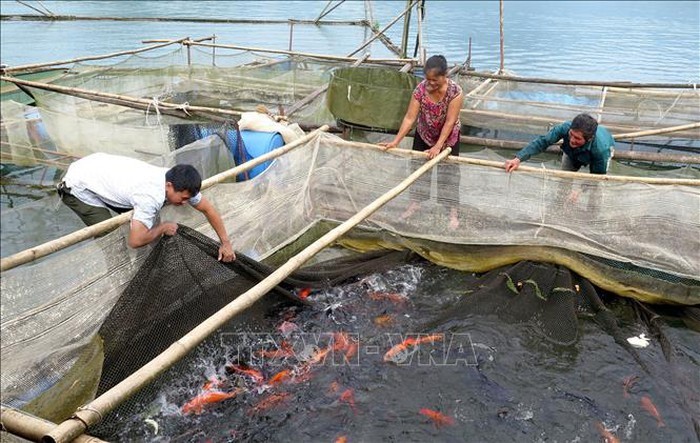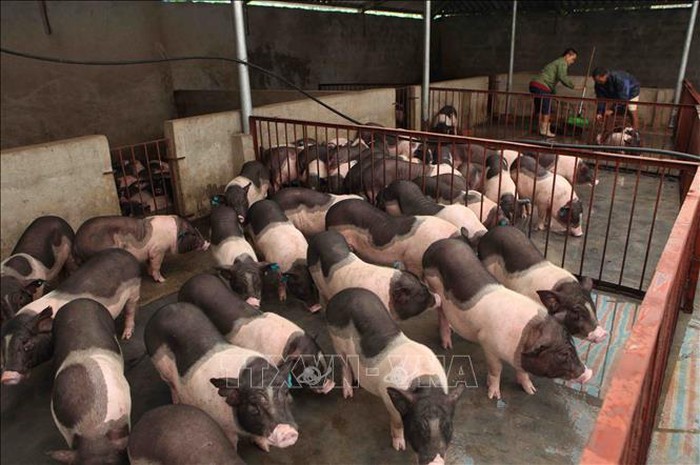(VOVWORLD) - Vietnam has made poverty reduction a major policy priority. Greater focuses will be places on mountainous and ethnic minority inhabited areas.

Coffee is the main industrial plant for poverty reduction among ethnic minority groups in the Central Highlands. (Photo: Hoai Nam/VNA)
|
The National Assembly has budgeted approximately 2.1 billion USD to help poor localities as part of the National Target Program on Sustainable Poverty Reduction until 2020.
The goals are to reduce poverty quickly and sustainably; to boost social and economic development in disadvantaged areas populated by ethnic minority groups; to increase production, diversify means of subsistence, and expand poverty reduction models; and to improve oversight, assessment, and communications to narrow the development gap between regions.
Many solutions have been devised to tap local advantages, restructure crops, optimize the use of state and local resources, and get the entire community involved. Progress has not always proved sustainable, however, especially in northern mountains and Central Highland regions, where the annual rate of people sliding back into poverty remains 5.1%.
Vo Van Bay, head of the program’s Coordination Office of the National Assembly Council for Ethnic Affairs, said: “This is a headache for us. Vietnam has gained remarkable achievements in poverty reduction, but backsliding into poverty occurs, predominantly in ethnic areas. This means our poverty reduction work needs to be modified to match conditions in different regions. Currently the socio-economic development program in the mountains and other extremely disadvantaged ethnic minority areas is applied uniformly.”
|
 People in Na Hang town, Tuyen Quang province, have raised caged fish in the lake of Tuyen Quang hydropower plant on VIETGap standards, which has resulted in high economic efficiency and created thousands of jobs. People in Na Hang town, Tuyen Quang province, have raised caged fish in the lake of Tuyen Quang hydropower plant on VIETGap standards, which has resulted in high economic efficiency and created thousands of jobs.
(Photo: Van Ty/VNA)
|
80% of the resources of the national poverty reduction program goes to mountainous ethnic minority areas.
Ngo Truong Thi, head of the office of the National Poverty Reduction Committee, said it takes time to implement preferential policies in areas that have the most widespread poverty.
“After 12 years of applying the poverty reduction program, we think it’s feasible to have half of the poor districts sustainably out of poverty by 2020. But we need to continue investing in extremely poor districts like Muong Lat in Thanh Hoa and Bac Ai in Ninh Thuan,” said Thi.

More than 100 poor households in five communes of Than Uyen district, Lai Chau province, have been provided with breeding pigs for economic development and poverty reduction. (Photo: Quy Trung/VNA)
|
Last year the percentage of households living in poverty, based on multi-dimensional poverty criteria, dropped below 6%.
Bui Sy Loi, Deputy Director of the NA’s Committee for Social Affairs, said the agency will continue to conduct thorough oversight of the poverty reduction program in remote, border, and island areas.
“An assessment will be made to determine which policies are effective and which should be discontinued or combined. Models used in formerly poor districts or communes which have now become successful new rural villages should be noted, celebrated, and replicated,” according to Loi.
The National Target Program on Sustainable Poverty Reduction until 2020 has reached its midpoint. In the remaining months of the program, the government will focus on policies that generate jobs and increasing the incomes of ethnic workers.